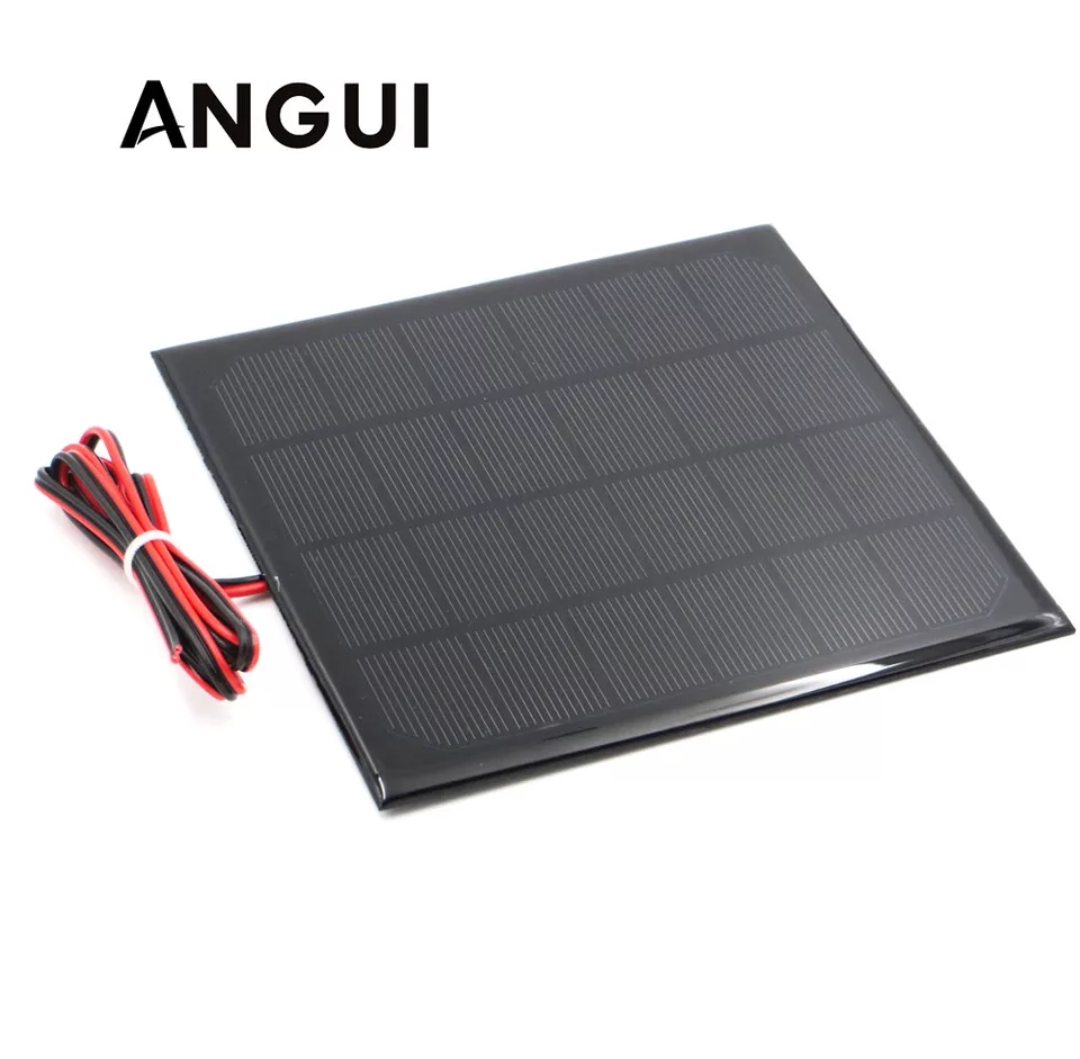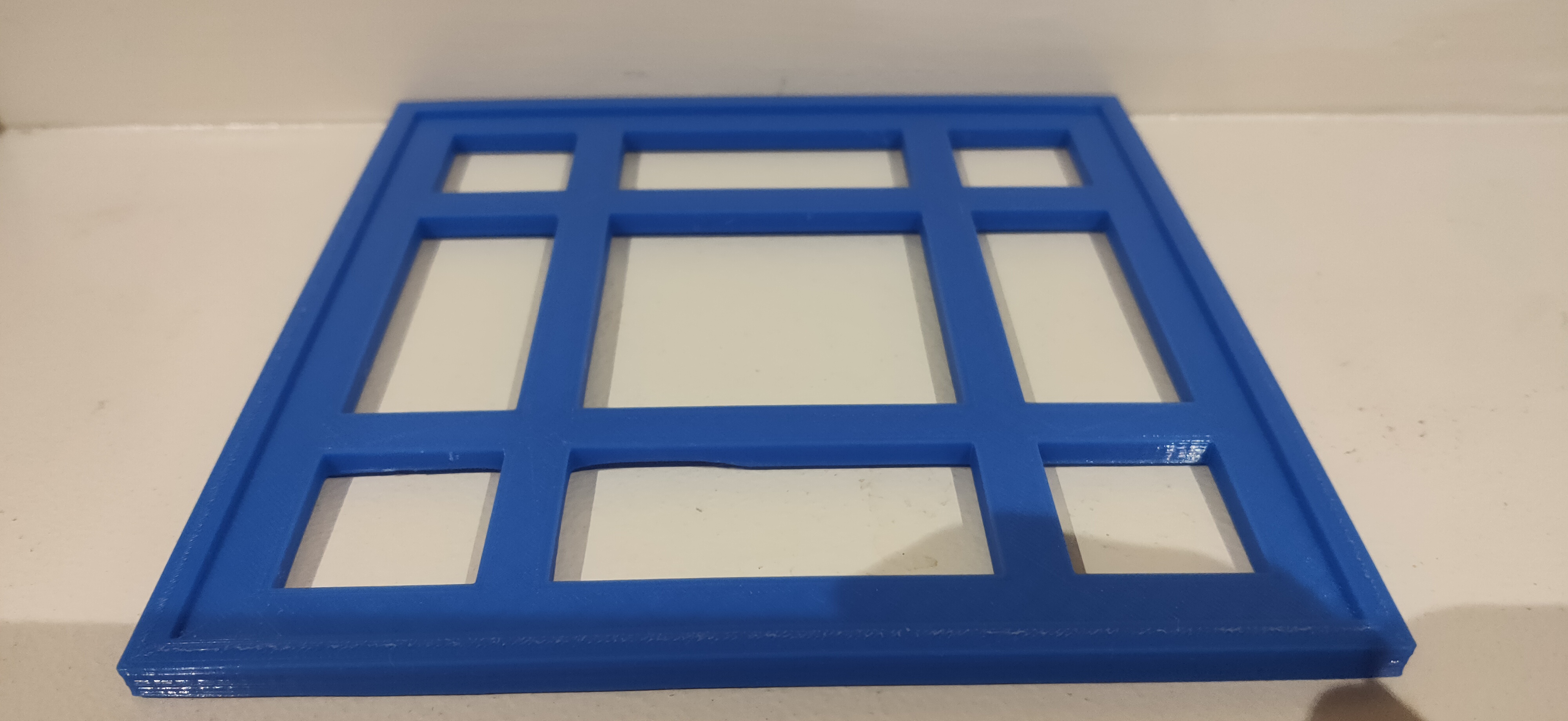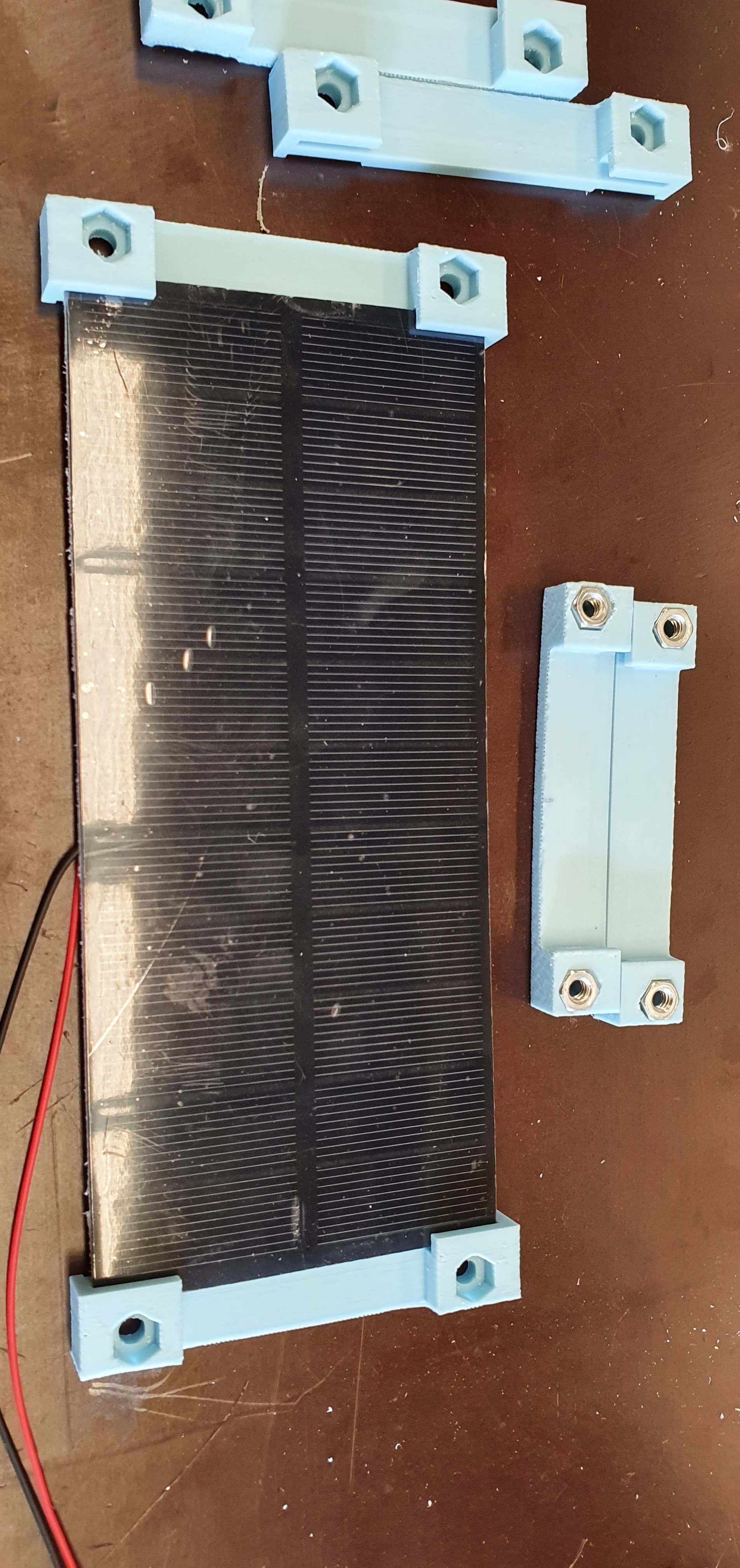How can I mount a small solar panel (165*165mm) for outside use?

I designed a basic plastic 3d printed mount but I’m unsure if I need a clear plastic cover to go over the panel and if the whole panel enclosure needs to be watertight?

How can I mount a small solar panel (165*165mm) for outside use?

I designed a basic plastic 3d printed mount but I’m unsure if I need a clear plastic cover to go over the panel and if the whole panel enclosure needs to be watertight?

What research have you done on this? Google results, manufacturers data for the solar panel etc etc?
It’s an AliExpress panel with model number: CNC165X165-6
The model number seems to be generic and only returns minimal results when googled only saying the manufacturer may be Star Solar.
This may be the back of the panel but I can’t tell for certain.
It appears the panel is coated in some type of epoxy, I’m mainly wondering if that will be sufficient if left to the elements.
Should I instead get some plexiglass and build a watertight enclosure to house the panel?
What are the pros & cons of doing so, or not doing so. Perhaps you need to do a SWOT analysis as well.
I have run these chinese type of solar panels with no issues in the outdoors.
I solder onto the back and then cover where the wires attach with a big dob of neutral cure silicon.
I have panels that have been in the sun, rain, wind etc for 5 years and are still charging.
The epoxy seems to craze a little and go white, but still seem to charge ok, although probably not at the same efficiency as new
cheers
Paul
That’s what I wanted to hear!
Cheers I think they will be good enough for this test project.
for testing you will have no problems - for production I would go with better quality
Very suitable for this is so called Liquid Electrical Tape.
Keeps the connections insulated even when submerged in water.

We 3D printed some little corners and mount them to some spot welded frame underneath
Nice brackets.
It appears like the brackets (depending on sun and mounting position) may partially cover some cells. If so this may effect output of the whole panel. For your information:
The solar cells on these small panels are commonly wired in series. If only even a single cell of the panel is partially shaded, that already will have a severe impact on the output of the whole panel. Covering only one single cell can/will reduce output power of the whole panel to almost 0 (the panel in your picture has 22 cells).
It is the output current that is mostly impacted, the output voltage will be much less impacted. Therefore the decrease in performance cannot be measered with (only) a voltage meter.
It’s easy to check this yourself. Assuming that the panel’s max output current is not more than a few hundred mA you can easily shortcut it with a multimeter measuring the output current. When you then (partially) cover/shade one or more cells you will see the output current quickly collapse.
The following video demonstrates the effects of shading on solar panels:
and, definitely don’t cover with plexi or foil or such - while that looks transparent to the human eye, it takes away a significant part of the incoming light.
for what you d be losing, you could buy several of the panels instead 
Also the protective foil that is visible in the picture should be removed for optimal performance.
Quick, Simple, Inexpensive, and Very Weather Secure
Two corners is usually sufficient for 95% of installations; but if you feel the need for more security; live in Typhoon areas, etc. you can do all 4 corners.
NOW you can put screws through the uncut areas to attach to any surface and/or with a little ingenuity and creativity you can use the tubing as a basis for a rubber bands around a piece of conduit/PVC Pipe, etc.
NOTE: Tubing should be UV resistant
Total time under 5 minutes
Total cost Under 20 cents
For nodes a 165mmx165mm solar panel is in my eyes not small… I operate my outdoor nodes with 50x50mm solar panels, and that is still no ‘small’ for me. I will further reduce the solar panel size on my nodes soon :).
Just my 2 cents…